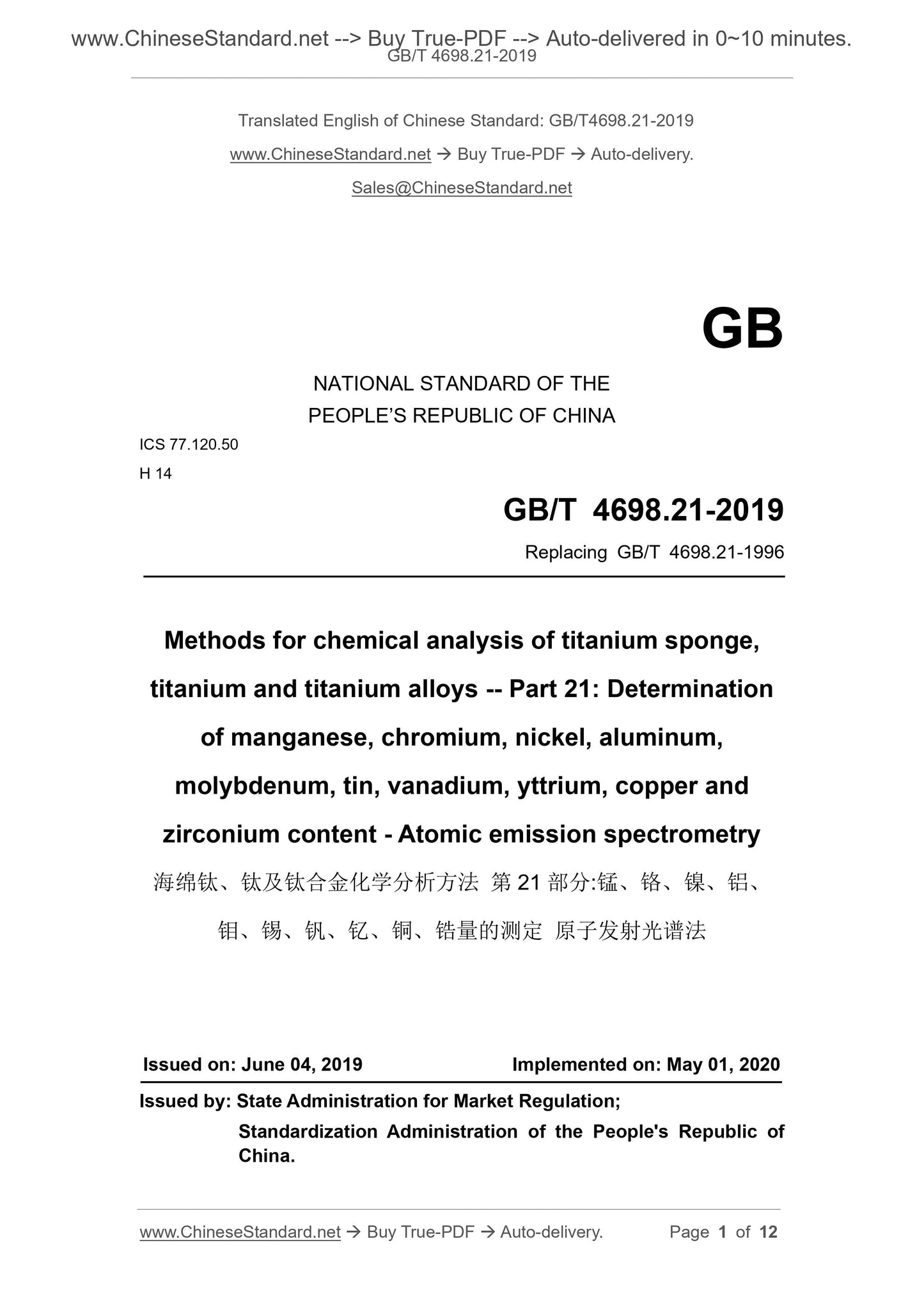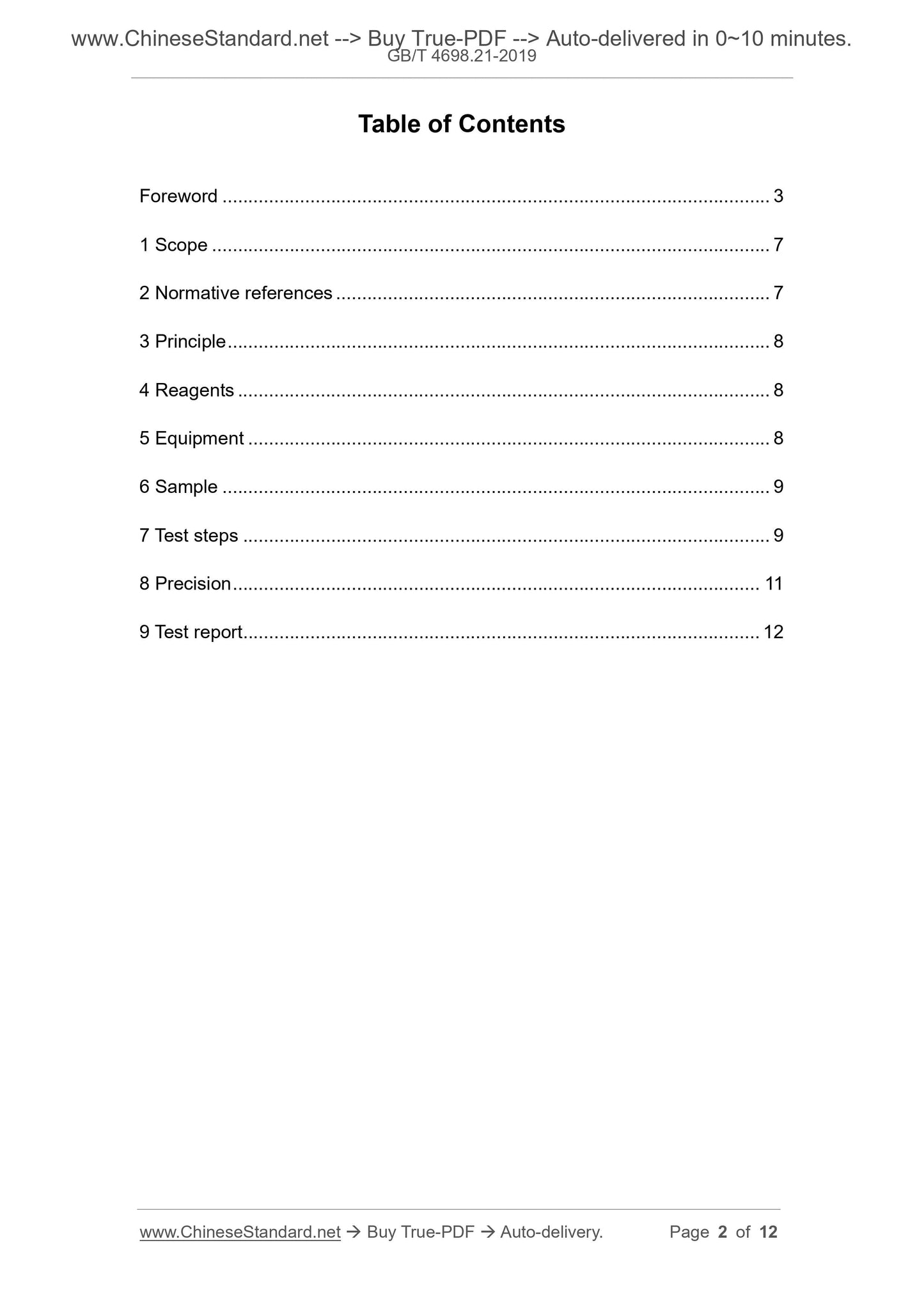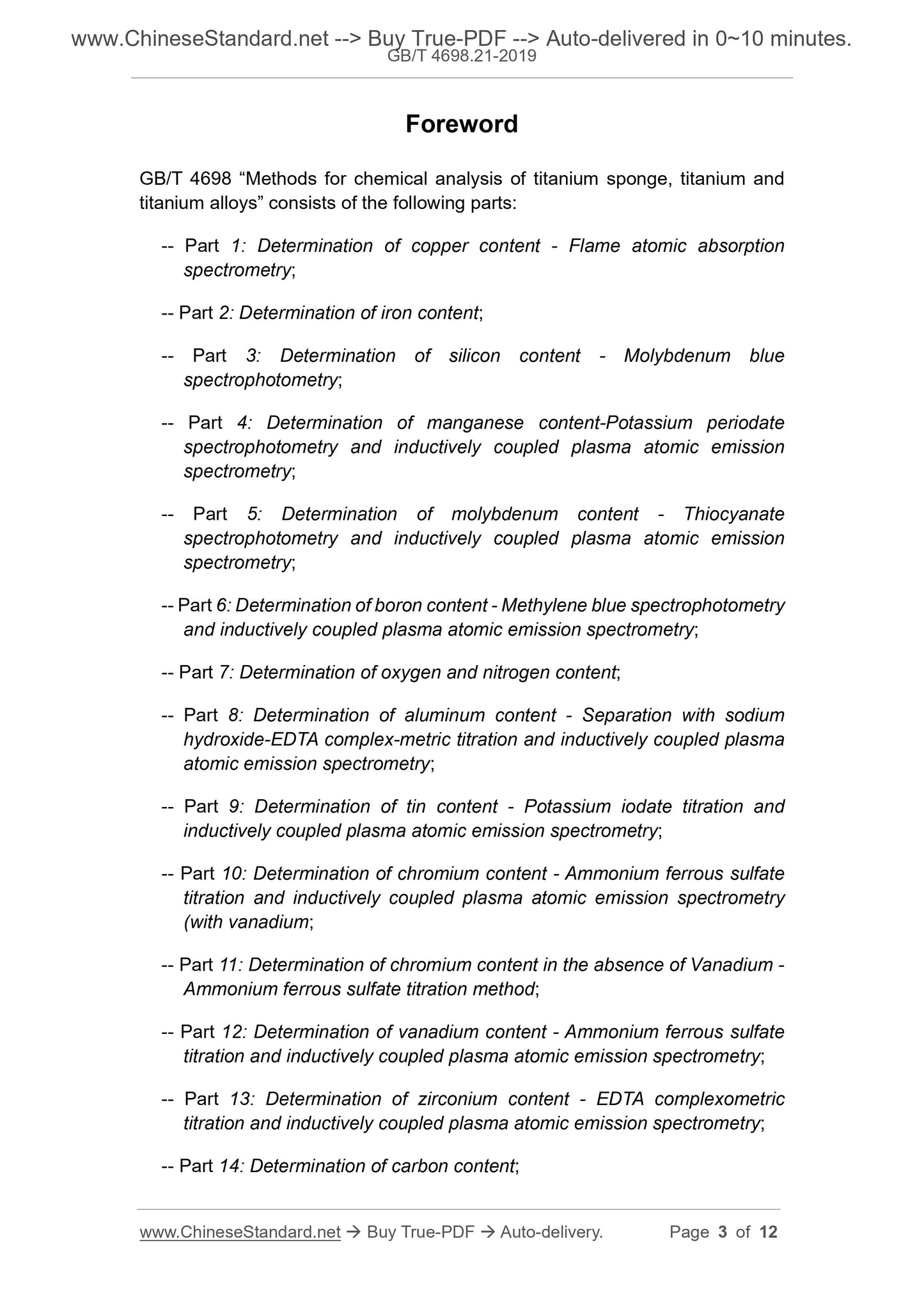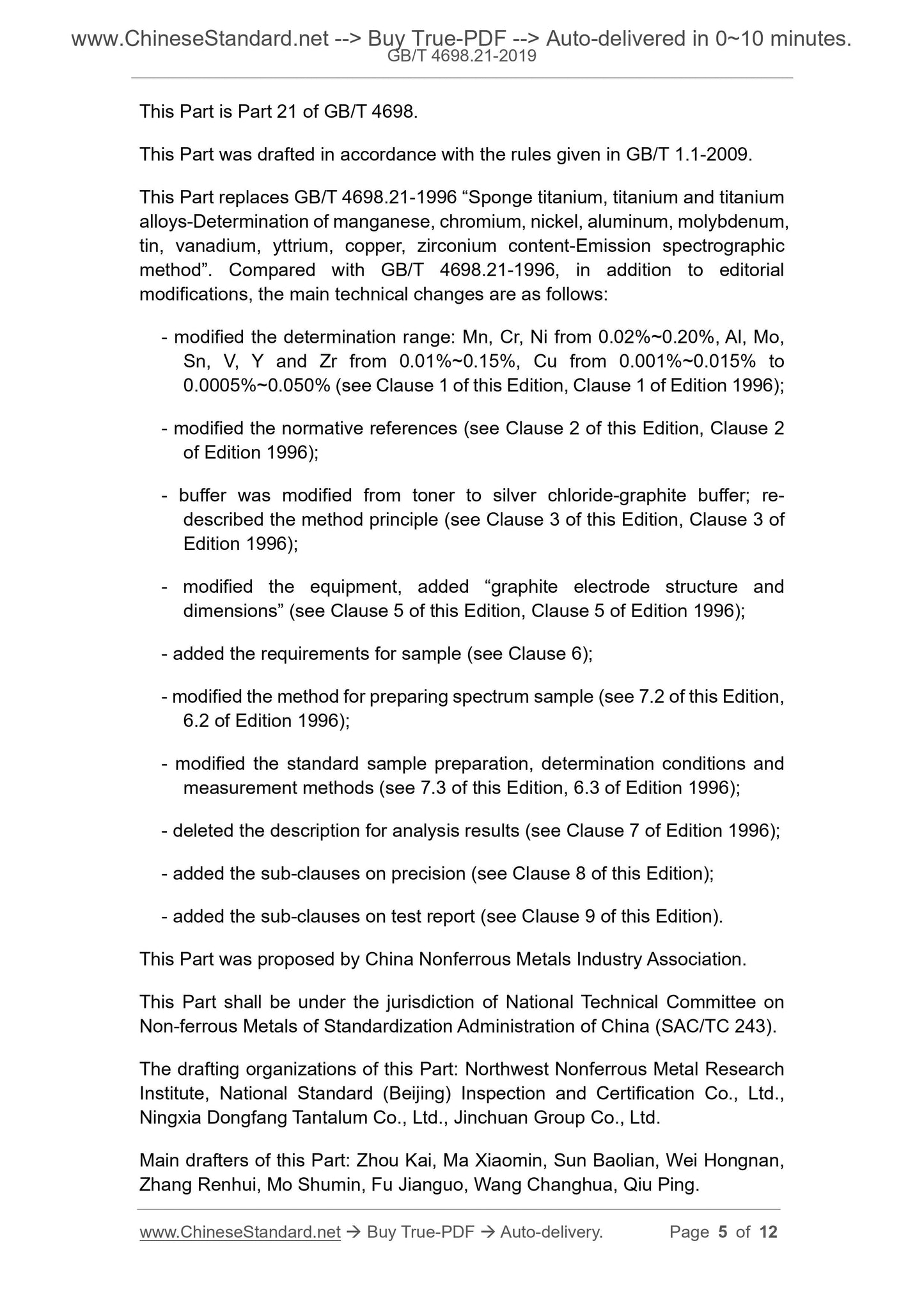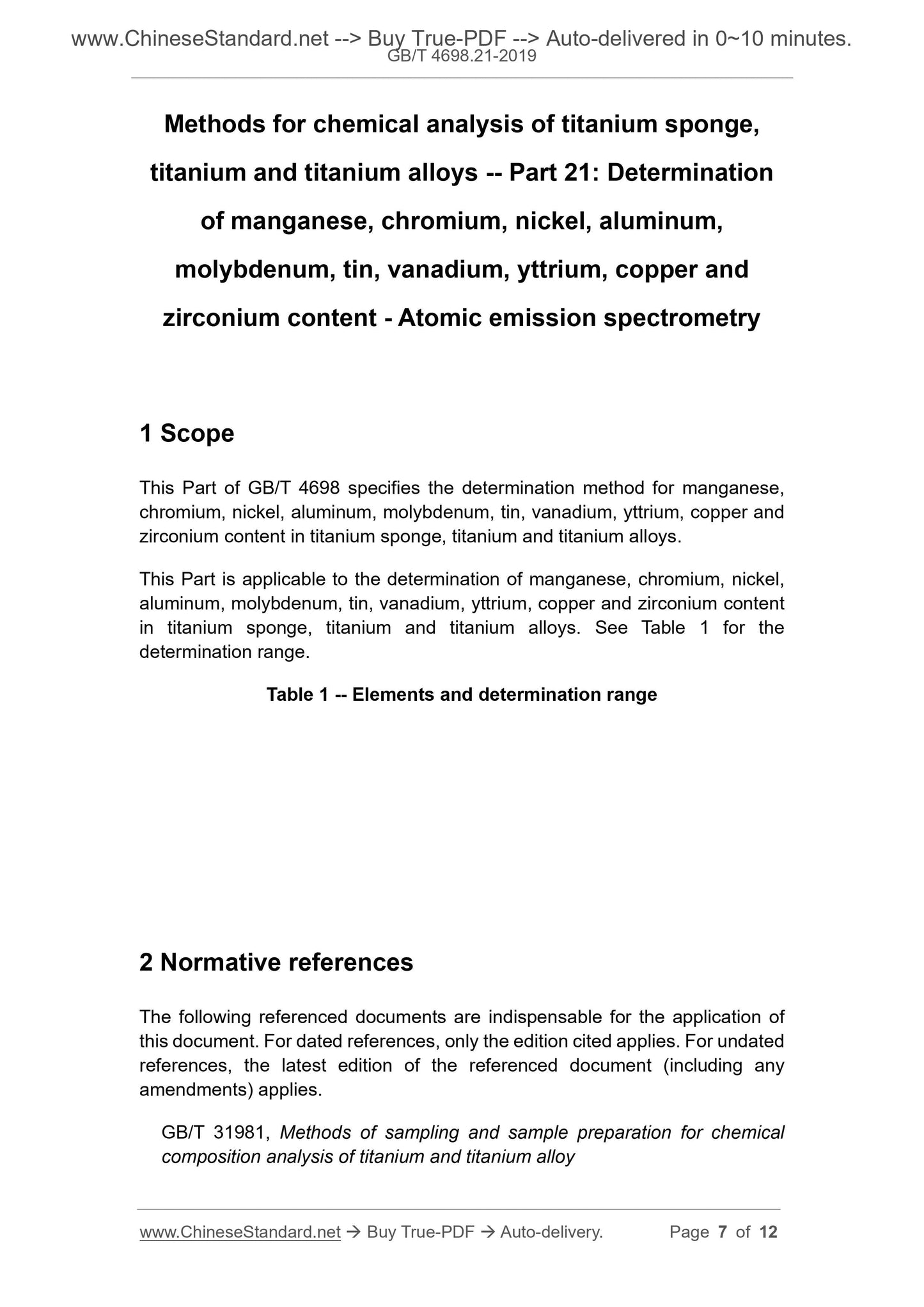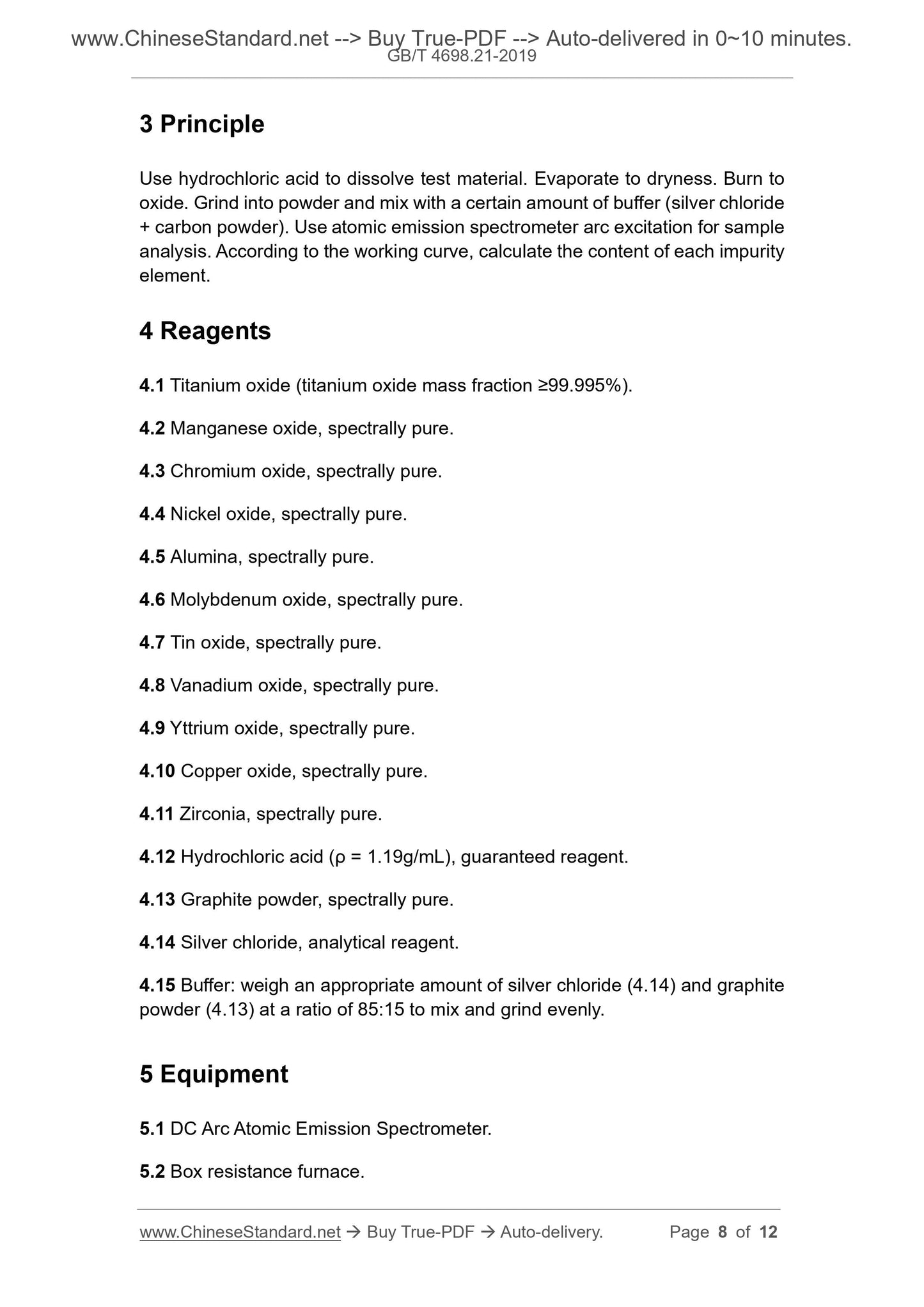1
/
of
6
www.ChineseStandard.us -- Field Test Asia Pte. Ltd.
GB/T 4698.21-2019 English PDF (GB/T4698.21-2019)
GB/T 4698.21-2019 English PDF (GB/T4698.21-2019)
Regular price
$130.00
Regular price
Sale price
$130.00
Unit price
/
per
Shipping calculated at checkout.
Couldn't load pickup availability
GB/T 4698.21-2019: Methods for chemical analysis of titanium sponge, titanium and titanium alloys - Part 21: Determination of manganese, chromium, nickel, aluminum, molybdenum, tin, vanadium, yttrium, copper and zirconium content - Atomic emission spectrometry
Delivery: 9 seconds. Download (and Email) true-PDF + Invoice.Get Quotation: Click GB/T 4698.21-2019 (Self-service in 1-minute)
Newer / historical versions: GB/T 4698.21-2019
Preview True-PDF
Scope
This Part of GB/T 4698 specifies the determination method for manganese,chromium, nickel, aluminum, molybdenum, tin, vanadium, yttrium, copper and
zirconium content in titanium sponge, titanium and titanium alloys.
This Part is applicable to the determination of manganese, chromium, nickel,
aluminum, molybdenum, tin, vanadium, yttrium, copper and zirconium content
in titanium sponge, titanium and titanium alloys. See Table 1 for the
determination range.
Table 1 -- Elements and determination range
Basic Data
| Standard ID | GB/T 4698.21-2019 (GB/T4698.21-2019) |
| Description (Translated English) | Methods for chemical analysis of titanium sponge, titanium and titanium alloys - Part 21: Determination of manganese, chromium, nickel, aluminum, molybdenum, tin, vanadium, yttrium, copper and zirconium content - Atomic emission spectrometry |
| Sector / Industry | National Standard (Recommended) |
| Classification of Chinese Standard | H14 |
| Classification of International Standard | 77.120.50 |
| Word Count Estimation | 8,838 |
| Date of Issue | 2019-06-04 |
| Date of Implementation | 2020-05-01 |
| Issuing agency(ies) | State Administration for Market Regulation, China National Standardization Administration |
Share
